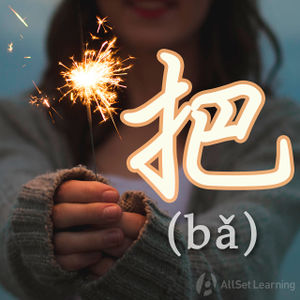Difference between revisions of "Verbs followed by "gei""
| Line 91: | Line 91: | ||
{{Similar|Expressing "for" with "gei"}} | {{Similar|Expressing "for" with "gei"}} | ||
{{Similar|Verbs preceded by "gei"}} | {{Similar|Verbs preceded by "gei"}} | ||
| − | {{Similar| | + | {{Similar|Using "dui" with verbs}} |
{{Similar|Expressing passive voice with "gei"}} | {{Similar|Expressing passive voice with "gei"}} | ||
{{Similar|Advanced uses of "ba"}} | {{Similar|Advanced uses of "ba"}} | ||
Revision as of 08:56, 6 November 2017
-
Level
-
Similar to
-
Used for
-
Keywords
Although it's standard practice to put a word or phrase that modifies a verb before the verb, there are, of course, exceptions. 给 (gěi) is one of those exceptions; it sometimes comes before the verb, and sometimes after. This article is about when it comes after.
Contents
Basic Pattern
Structure
Note that the verbs that fit into this pattern are normally single-syllable verbs.
Subj. + Verb + 给 + Recipient + Obj.
Or
Obj. + Subj. + Verb + 给 + Recipient
Examples
- 昨天 他 送给 老师 一 束 花 。 He gave the teacher a bouquet of flowers.
- 一 个 男人 扔给 那个 乞丐 几 个 硬币 。A man threw a few coins towards the beggar.
- 下 次 你 能 不 能 寄给 我 一些 书 ?Could you please send me some books next time?
- 这些 校友 一共 捐给 学校 二 十 万 。These alumni donated two hundred thousand in total to the school.
- 老板 交给 他 一 个 非常 重要 的 项目 。 The boss gave him a very important project.
Pattern Using 把
Structure
Additionally, you can add 把 into this structure. This does not change the meaning of the sentence and when used in context can even add emphasis to what's being done and given.
Subj. + 把 + Obj. + Verb + 给 + Recipient
Examples
- 你 想 把 这 束 花 送给 老师 吗 ?Are you going to give this bouquet of flowers to the teacher?
- 请 把 那些 照片 都 发给 我 。Please send all of those pictures to me.
- 我 已经 把 这 辆 车 卖给 了 一 个 朋友 。I've already sold this car to a friend of mine.
- 请 把 盐 递给 我 ,谢谢 。Please pass me the salt. Thanks.
- 老师 ,可以 把 这 本 书 借给 我 吗 ?Teacher, could you please lend me this book?
Note that the verb 嫁 (jià) cannot fit into the 把 pattern above; it's an exception.
- 她 嫁给 了 一 个 有 钱 的 老头。
If you really want to make a 把 sentence, though, you can do this:
- 她 的 爸爸 把 她 嫁给 了 一 个 有 钱 的 老头。
Academic Debate
Although 给 phrases should normally precede a verb like any other prepositional phrase, they sometimes come after. Why have it both ways? There is some academic debate over whether this 给 is actually a preposition or a type of verb (often called a "co-verb"), or even a type of complement. This type of discussion is outside the scope of this article, however.
See also
- Expressing "for" with "gei"
- Verbs preceded by "gei"
- Advanced uses of "ba"
- Expressing "for" with "wei"
- Expressing passive voice with "gei"
Sources and further reading
Books
Dictionaries
- 现代汉语词典(第5版) (p. 464) →buy



